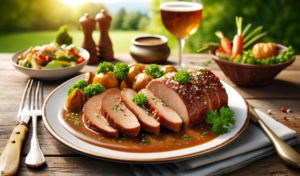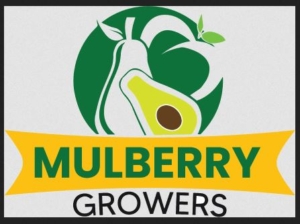Sage Export to Germany : Exclusive Tips to Import to ANy Region | Hamburg | Munich | Stuttgart | Leipzig | Dresden | Nuremberg | Hanover | Mainz | Cologne
Sage export to Germany happens in simple direct stages, and most of the needs to import sage to Germany can be captured in a contract with an exporter like Mulberry Growers. Let us look at the typical flow of sage exports to Germany. In reading this, you get informed about the sources, routes, destinations, and market for sage export to Germany.

Sage Export to Regions of Germany
The process starts by identifying a source in a country that grows the best quality sage. Kenyan highlands have a lot of high-quality sage due to moderate temperatures and well-drained soil, which are essential for sage cultivation. The subsequent step is to establish an agreement or contract with an exporter like Mulberry Growers, and this clears the way for the packaging and shipping to occur. The process can be expedited depending on the buyer’s needs.

Cities with direct port access have a significant logistical advantage for sage export to Germany. Hamburg, with its vast and busy Port of Hamburg, is a major entry point for international shipments, making it a hub for importing and distributing sage throughout northern Germany and beyond. Similarly, Bremen benefits from the Port of Bremen, which facilitates the efficient handling and transport of goods, including sage, to and from various destinations. Kiel, with its Port of Kiel, provides a crucial maritime link for sage export to Germany, supporting the local economy and streamlining the supply chain. Each of these ports plays a vital role in ensuring that sage imports reach their destinations promptly and effectively.

Sage imported in refrigerated containers to cities like Berlin, Munich (München), Stuttgart, Leipzig, Dresden, Nuremberg (Nürnberg), Hanover (Hannover), Erfurt, and Mainz follows a common route through the Port of Hamburg. After arriving at this major port, sage is transported by rail or truck to its destination. This route is highly efficient, leveraging Germany’s robust rail network to ensure timely delivery across these key cities. The use of Hamburg’s port facilities helps streamline the process of sage export to Germany, making it well-suited for cities with significant demand for fresh herbs and spices.
In Cologne (Köln), sage can be imported either through the Port of Hamburg or, alternatively, via the Port of Rotterdam, providing flexible logistical options for sage export to Germany. For Frankfurt, sage might be imported through Hamburg, or for faster delivery, it could arrive via air freight at Frankfurt Airport. The availability of multiple routes and transportation modes supports the efficient distribution of sage to these cities, meeting both culinary and commercial needs. This multi-port strategy ensures a steady supply of sage that is imported to Germany, crucial for maintaining the diverse applications in these vibrant urban centers.

Reasons for Sage Export to Germany
The main reason for sage export to Germany are culinary or nutritional, but there are other uses in herbals and naturalistic cosmetic products.
Sage is increasingly and widely being used by restaurants to flavor their dishes. Sauerbraten, a traditional German pot roast, involves marinating the meat for several days before cooking, which helps tenderize it and infuse it with flavor. This provides one solid reason for sage export to Germany. Sage is often included in the marinade or the braising liquid, contributing its distinctive taste to the dish. The herb complements the tangy, sweet, and spicy elements of the marinade, enhancing the overall depth of flavor. When the meat is slow-cooked, sage’s earthy notes meld with other spices and vegetables, resulting in a rich and complex flavor profile that defines this classic German dish.

The other reason for sage export to Germany is its use in Wiener Schnitzel, a popular dish made from breaded and fried veal, typically seasoned with salt and pepper. Some of its recipes incorporate sage into the breadcrumb mixture or as part of the sauce to add a subtle herbal note. The sage can be finely chopped and mixed with the breadcrumbs, providing a hint of its unique flavor to the crispy coating. Alternatively, a sage-infused sauce might be served alongside the schnitzel, offering a complementary taste that balances the richness of the veal with the herb’s distinctive aroma.
Bratwurst sausages with sage flavoring are the other reason for sage export to Germany. They are a staple in German cuisine, made from finely ground pork, beef, or veal. Sage is sometimes added to the seasoning mix, which imparts a unique herbal quality to the sausages. The inclusion of sage enhances the flavor profile of the bratwurst, adding a savory and slightly peppery taste that complements the meat. This herb is often combined with other traditional seasonings like salt, pepper, and nutmeg, resulting in a well-rounded and aromatic sausage that is enjoyed grilled, pan-fried, or in various dishes.
Sage is a common herb used in German poultry dishes, such as roasted chicken or turkey. It is often employed in seasoning or as part of the stuffing. The herb’s robust flavor pairs well with poultry, adding depth to the savory notes of the meat. Sage can be used fresh or dried, and its distinctive taste helps to enhance the overall flavor of the dish. When included in stuffing, sage complements other ingredients like onions and bread, resulting in a harmonious blend of flavors that elevates the poultry dish. It is the other reason for sage export to Germany.

The other reason for sage export to Germany is that it is a flavorful herb that can be used to season a variety of potato dishes in German cuisine. For example, it can be added to roasted potatoes, where its earthy notes blend well with the crispy exterior and tender interior of the potatoes. Sage is also used in potato soups, where it contributes a subtle herbal flavor that balances the creamy texture of the soup. Whether used in a simple roast or a more complex potato preparation, sage adds a distinctive taste that complements the natural flavor of the potatoes.
Sage is frequently used in German meat dishes, including meatballs, meatloaf, and other ground meat preparations. It incentivizes sage export to Germany because the robust flavor helps to enhance the taste of the meat and adds an aromatic quality to the dish. When incorporated into seasoning blends, sage works well with other spices and herbs, creating a well-balanced flavor profile. In meatloaf or meatballs, sage can be mixed directly into the ground meat, ensuring that its flavor is evenly distributed throughout the dish. This use of sage adds a savory depth that complements the richness of the meat.
Sage is a common addition to pumpkin soup in German cuisine, where it helps to balance the sweetness of the pumpkin. The herb’s earthy and slightly peppery flavor pairs well with the creamy texture of the soup, creating a more complex and nuanced taste. Sage can be used in various forms, such as fresh leaves or dried, and is often incorporated into the soup during cooking. Its flavor melds with other ingredients like onions, garlic, and cream, resulting in a well-rounded soup that highlights the pumpkin’s natural sweetness while adding a hint of herbal depth. The market for such flavors is the other reason for sage export to Germany.
Where to Get Sage Export to Germany
Mulberry Growers is a major exporter of sage to Germany. You can obtain large quantities of high-quality fresh sage from this company. We are ready for our German importers to make their orders:

You can start here to connect to us or use any of these contact options:
- Website: www.mulberrygrowers.com
- Our Email: commercial@mulberrygrowers.com
- Call/WhatsApp: +254 716 150 111 OR +254 748 897 749